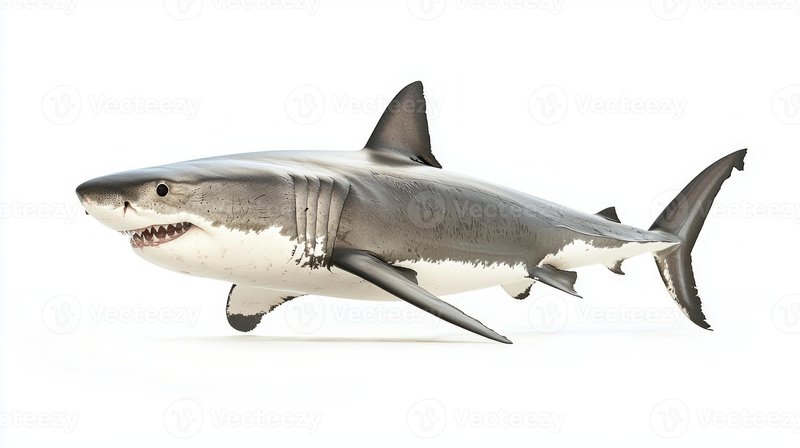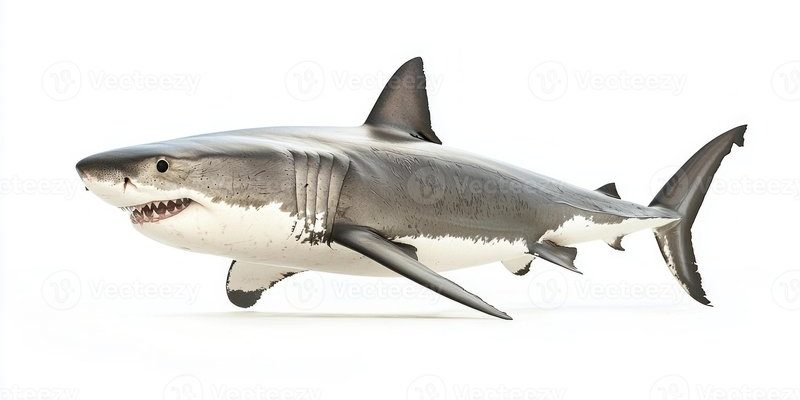
The role of the great white shark is often misunderstood. Some folks think of them as cold-blooded killers, but there’s so much more to the story. These creatures are essential players in the ocean’s ecosystem, ensuring that fish populations remain healthy and that the balance of ocean life is preserved. Let’s dive into why these magnificent sharks are so important for the health of our seas.
Understanding the Great White Shark
Great white sharks are not just the biggest fish in the ocean; they’re complex animals with fascinating behaviors. Growing up to 20 feet long and weighing over 4,000 pounds, these sharks are truly impressive. Their bodies are designed for speed and efficiency, allowing them to swim at speeds of up to 35 miles per hour. But what really sets them apart is their role as apex predators.
Apex predators are at the top of the food chain, meaning they have no natural enemies. This position allows them to help control the populations of various species below them. For instance, when great whites hunt seals, they help maintain the balance of seal populations. Too many seals can lead to overgrazing of fish populations, which affects the entire marine ecosystem. By keeping the seal numbers in check, great white sharks ensure that fish populations can thrive.
You might be wondering how this all connects. Well, everything in nature is intertwined. When one species is affected, it can ripple through the entire ecosystem. Great white sharks act as nature’s balance keepers, which makes their presence vital for healthy oceans.
The Great White Shark’s Predatory Role
Eliminating certain prey species is crucial for the overall health of marine ecosystems. When a great white shark hunts, it’s not just about filling its belly. It’s about maintaining balance. By preying on species like seals and large fish, they prevent overpopulation and competition among other species.
Here’s the thing: overpopulation of prey can lead to a decline in their food sources. If too many seals are swimming around, they can consume a huge amount of fish, which can lead to depletion of those fish stocks. This is where the great white comes into play—its hunting habits ensure that not only do seal populations stay healthy, but so do the fish populations that many other marine species rely on.
Moreover, great whites are known for their unique hunting techniques. They often use surprise and stealth to catch their prey, demonstrating intelligence and adaptability. This method means they’re able to target the weak or sick individuals within a population, further strengthening the health of the species as a whole.
The Impact of Great White Sharks on Biodiversity
Biodiversity is a fancy word that describes the variety of life in an ecosystem. It’s crucial for a healthy environment, and great white sharks play a significant role in maintaining this diversity. By controlling the populations of certain species, they help ensure that there’s a wide array of marine life thriving alongside them.
Think of it this way: when a predator is removed from the ecosystem, the prey often flourishes unchecked. This can lead to a decline in biodiversity as dominant species outcompete others for resources. Great white sharks keep this in check, allowing for a range of species—from smaller fish to larger marine mammals—to coexist.
Interestingly, their impact can also be seen in how other species evolve. When a great white shark is present, it creates a “landscape of fear” for other marine animals. This keeps certain species in check and encourages them to adapt and evolve over time. For example, smaller fish may develop quicker swimming speeds or improved camouflage techniques to evade these predators. This kind of co-evolution enhances the overall resiliency of marine ecosystems.
Great White Sharks and Their Role in Ecosystem Health
An often-overlooked aspect of great white sharks is their influence on the health of the ocean floor. Healthy shark populations help control the populations of larger fish that, in turn, keep bottom-dwelling species in check. This balance is crucial because overgrazing by certain species can damage critical habitats like coral reefs.
Coral reefs, often called the “rainforests of the sea,” are some of the most diverse ecosystems on the planet. They rely on a delicate balance of species. When great white sharks are present, they protect this balance, allowing corals to thrive and providing a habitat for countless marine life forms.
Additionally, as great white sharks hunt and consume prey, they help redistribute nutrients throughout the ocean. When they feast in one area and then migrate, they leave behind remains that feed a variety of other marine organisms. This nutrient cycling is essential for maintaining the health of various marine habitats.
The Threats Facing Great White Sharks
Despite their importance, great white sharks are facing numerous threats. Overfishing, habitat loss, and climate change are just a few challenges they encounter. Humans have a significant impact on marine ecosystems, and when it’s harmful to apex predators, it can lead to dire consequences for the entire ocean.
Overfishing is perhaps the most pressing threat. Many sharks, including great whites, are caught accidentally in fishing gear or targeted for their fins, which are prized for shark fin soup. This has led to drastic declines in their populations. Without these apex predators, the balance of marine ecosystems begins to unravel.
Habitat loss is another significant concern. Coastal development and pollution can disrupt the areas where great whites hunt and breed. As their habitats disappear, so does their ability to thrive. Moreover, climate change is altering ocean temperatures and currents, which can affect great white shark migration patterns and food availability.
The Importance of Conservation Efforts
So, what can be done to protect great white sharks and, in turn, the ecosystems they support? Conservation efforts are crucial. This can include creating protected marine areas, implementing sustainable fishing practices, and raising awareness about the role these sharks play in our oceans.
Protected marine areas allow great white sharks and other wildlife to thrive without the pressures of fishing and habitat destruction. These regions serve as crucial breeding and feeding grounds, so establishing more of them could help stabilize shark populations.
Sustainable fishing practices can help reduce bycatch—the unintentional capture of non-target species—in fishing gear. When fishermen use methods that minimize harm to great whites and other vulnerable species, it helps ensure a balanced ecosystem.
Lastly, education and awareness are key. When people understand the importance of great white sharks, they’re more likely to support conservation efforts. Community initiatives can encourage responsible behavior around ecosystems, such as reducing pollution and advocating for marine protection.
In Conclusion
Great white sharks are not just fearsome predators; they are vital components of marine ecosystems. By regulating prey populations, promoting biodiversity, and maintaining the health of our oceans, these magnificent creatures ensure the balance of life beneath the waves.
As we face growing environmental challenges, protecting great white sharks has never been more important. They remind us of the intricate relationships that exist within our oceans and the responsibility we have to safeguard them. By supporting conservation efforts and fostering a respect for all marine life, we can help preserve the beauty and balance of our ocean ecosystems for generations to come.

